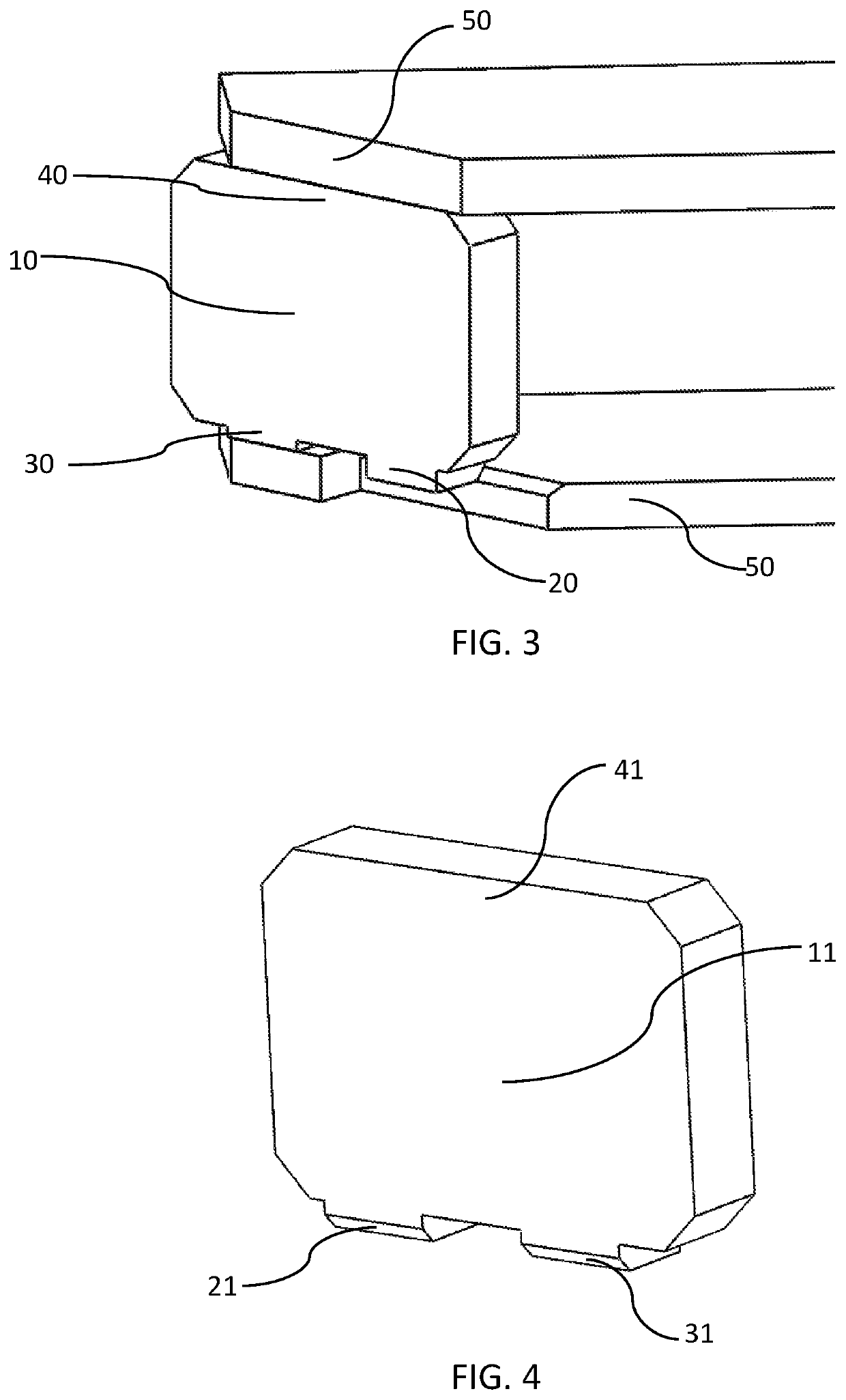Mirror-based assemblies, including lateral transfer hollow retroreflectors, and their mounting structures and mounting methods
a technology of mirror-based assemblies and retroreflectors, applied in the direction of mirrors, instruments, mountings, etc., can solve the problems of thermal effects that may translate into degradation of optical performance, reduced stress, and design not necessarily optimized for thermal effects, so as to improve the mirror-base assembly, and minimize thermal expansion or contraction.
- Summary
- Abstract
- Description
- Claims
- Application Information
AI Technical Summary
Benefits of technology
Problems solved by technology
Method used
Image
Examples
first embodiment
[0070]The first preferred embodiment of the mirror-based assembly is depicted in FIGS. 1-3, showing the mirror panel (10) having a first connection region (20), a second connection region (30) and a third connection region (40). In this first embodiment showing a single mirror panel as an example, the first connection region has a miter structure (20), the second region has a pad structure (30) and the third region has a flat structure (40). In FIG. 3 the mirror panel (10) is assembled within the mirror-based assembly to the support member (50).
second embodiment
[0071]The second preferred embodiment of the mirror-based assembly is depicted in FIGS. 4-6, showing the mirror panel (11) having a first connection region (21), a second connection region (31) and a third connection region (41). In this second embodiment of a mirror-based assembly, there are two connection regions having a miter structures (21,31), and the third region has a flat structure (41). In FIG. 6 the mirror panel is assembled within the mirror-based assembly to the support member (51).
third embodiment
[0072]The third preferred embodiment of the mirror-based assembly is depicted in FIGS. 7-9, showing the mirror panel (12) having a first connection region (22), a second connection region (32) and a third connection region (42). In this third embodiment of a mirror-based assembly, the first connection region has a miter structure (22), the second region has a pad structure (32) and the third region has a pin structure (42). In FIG. 9 the mirror panel is assembled within the mirror-based assembly to the support member (52).
[0073]The fourth preferred embodiment of the mirror-based mirror is depicted in FIGS. 10-12, showing the mirror panel (13) having a first connection region (23), a second connection region (33) and a third connection region (43). In this second embodiment of a mirror-based assembly, there are two connection regions having a miter structures (23,33), and the third region has a pin structure (43). In FIG. 12 the mirror panel is assembled within the mirror-based assem...
PUM
 Login to View More
Login to View More Abstract
Description
Claims
Application Information
 Login to View More
Login to View More - R&D
- Intellectual Property
- Life Sciences
- Materials
- Tech Scout
- Unparalleled Data Quality
- Higher Quality Content
- 60% Fewer Hallucinations
Browse by: Latest US Patents, China's latest patents, Technical Efficacy Thesaurus, Application Domain, Technology Topic, Popular Technical Reports.
© 2025 PatSnap. All rights reserved.Legal|Privacy policy|Modern Slavery Act Transparency Statement|Sitemap|About US| Contact US: help@patsnap.com



